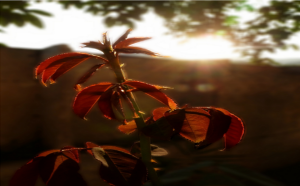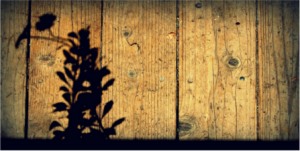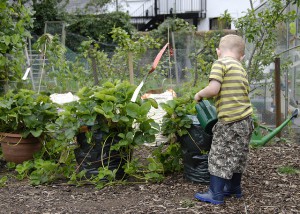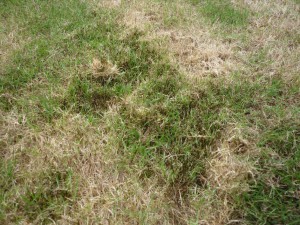“Summer afternoon – summer afternoon; to me those have always been the two most beautiful words in the English language.” – Henry James

There is nothing more satisfying than enjoying your beautiful garden in the sunshine. After you’ve carefully tendered to young plants, meticulously mowed your lawn and fought with wicked weeds; it’s time to sit back and reap the benefits of your hard work.
To help keep your garden in tip-top shape we’ve pulled together a few handy tips to help you maintain that beautiful green glow in your garden.
Spot Signs of Drought
Like the rest of us, Lawns and plants, need plenty of hydration during long periods of sunshine. Don’t let drought ruin your beautiful blooms; check your plants’ leaves and flowers for the early signs of dehydration. It’s time to water your garden when:
- Plant leaves are wilted, even when the sun goes down
- Look out for the leaves of your plants turning yellow and then brown
- Flowers have become shrivelled and have started to die off
- Your fruit trees are dropping more fruit than usual
Garden lawns are more resistant to long periods of dry weather than plants and flowers are. However, you know your lawn is parched when you notice your grass is turning yellow then brown, becoming limp and in extreme cases, developing bald patches!
Protect your Plants

During the warm summer days it’s important to help your plants retain as much moisture as possible. When the weather heats up, your plants can quickly loose moisture through their leaves. A good starting point is to protect them from excessive sunlight and heat. The sun’s rays are most intense during the afternoon so, move delicate pot plants and hanging baskets into a cool, shady area to protect them from damage.
If you are unable to move larger flowerpots, try adding a light shade to your plastic pots to help deflect the sun’s heat and harmful UV rays. Taller plants or trees in your garden are perfect for protecting young or small flowering plants.
Wind is another problem for your plants during the summer as it can also strip away any moisture retained in the leaves.
Our top tip is to cover delicate plants with a light polythene sheet to prevent wind damage which could stunt their growth.
Respect the Roots
Almost every drop of water plants need to survive is taken in via their roots. Encouraging your plants to develop strong, deep roots will make it easier for them to absorb essential moisture in the soil during dry spells in the summer.
Try to use large flowerpots where possible to encourage your plants to grow wide roots that reach deep into the soil.
Create the best conditions for your plants by loosening chunks of hard-packed soil to make it more porous. This will allow the soil to fully absorb the water so it reaches deep down to where your plants roots are.
Another way to improve the condition of your soil is to add a thick layer of organic mulch. This will provide the soil with the necessary nutrients needed to nurture your new plants and, reduce the amount of moisture lost through evaporation.
Avoid Wasteful Watering
Even in times when gardeners aren’t restricted by hose-pipe bans, using the right amount of water is essential for your plants’ survival this summer.
A good thorough watering of your plants twice a week is far better than a daily sprinkle from the hose. Soaking the soil thoroughly will encourage your plant’s roots to grow deep into the soil as they won’t need to come up to the surface for water.

The most effective time of the day to water your plants is during the evening or early in the morning when the cooler temperatures will allow the soil to absorb the most moisture. If you water your plants mid-day the heat will cause the water to evaporate and your efforts will have been in vain.
We always check to see if the top of the soil is damp before watering. If it is, then move on however, if you see a plant withering, you should water it immediately.
Try to avoid watering plants when the leaves are in direct sunlight as the sun will cause scorch the leaves and will do more harm than good.
Of course, if you are away on your travels over the summer, make sure to move your plants to an area where they will receive regular shade.
Love your Lawn
Taking care of your lawn is just as important as caring for your flowerbeds.
If your grass still shows footprints after a couple of days after it has been trodden on, it’s a tell tail sign that your lawn needs a bit of TLC this summer. Although grass is better equipped to handle long periods of drought, your lawn still need a bit of love and attention during the summer.

Help to ventilate the soil underneath your grass with a garden fork. This will also help water to penetrate the surface of your lawn. The best time to water your lawn is during the the evening and, avoid walking on it if possible immediately after it has been watered.
It takes a lot of energy for grass to grow back after mowing, which is an issue in a demanding summer’s day. The trick is to try to cut less frequently than you would normally expect to.
Raise the height of the lawn mower blades so they won’t demand as much energy to grow. As an added bonus, that the extra length of grass blades will also protect the grass roots from the strong sun.
Our final tip would be to kill any weeds or patches of moss you see developing as they have a bad habit of stealing moisture from your lawn. If you need a quick and easy way to get rid of weeds , why not have a look through our available effective and fast acting weed killers.
Please add tips or inspirations that have helped you grow your garden!
You may even feel like taking a tour through our website to see a brilliant range of garden furniture and accessories.
Photo Credit: Marina Del Castell & Dia

